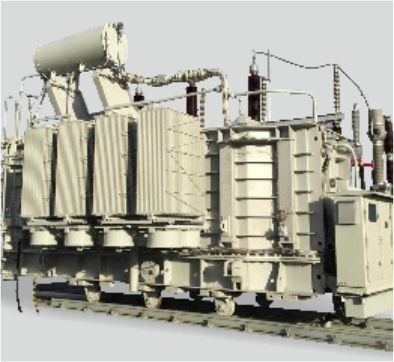Introduction:
The grid's stability is crucial when it comes to the delivery of electrical electricity. Power systems rely on a variety of parts to do this, with shunt reactors playing a key role. These reactors are quietly but successfully influencing the future of the electricity industry, especially when combined with the ground-breaking usage of ceramic spacers. In this guest post, we'll dive deep into Shunt reactor , analyze how ceramic spacers are revolutionizing electrical power distribution, and examine the game-changing advantages of ceramic spacers.
Discloure of Shunt Reactors
Shunt reactors, sometimes known as reactors by their short name, are complex electrical apparatuses made to control voltage levels and deal with reactive power in electrical networks. They are an essential component of the grid infrastructure, providing the uninterrupted supply of power to households, companies, and industries when installed parallel to transmission lines and substations.
Key Roles of Shunt Reactors:
Voltage Regulation:
Shunt reactors serve as guardians of grid voltage levels. They dynamically adjust reactive power flow, ensuring a consistent voltage profile throughout the grid. This capability becomes particularly crucial during periods of high demand or the integration of intermittent renewable energy sources.
Taming Voltage Fluctuations:
Rapid shifts in electricity consumption or power generation can lead to voltage fluctuations that threaten the stability of the grid. Shunt reactors come to the rescue by absorbing excess reactive power, preventing voltage spikes, and safeguarding sensitive equipment from damage.
Efficiency Enhancement:
By efficiently managing reactive power, shunt reactors contribute to reducing transmission losses. This translates into a more energy-efficient grid, ultimately lowering costs for consumers.
Grid Reliability:
Shunt reactors play an instrumental role in bolstering grid resilience. Their presence significantly reduces the risk of blackouts, ensuring uninterrupted power supply even under challenging conditions.
The Ceramic Spacer Revolution:
Traditionally, shunt reactors relied on oil-impregnated paper (OIP) as the primary insulation material. However, recent technological advancements have introduced ceramic spacers as a superior alternative. Ceramic spacer are solid insulating materials that have revolutionized the performance and longevity of shunt reactors.
Advantages of Ceramic Spacers:
Enhanced Insulation:
Ceramic spacers offer unparalleled insulation properties, drastically reducing the risk of electrical breakdowns and flashovers. This ensures the long-term reliability of shunt reactors, even in harsh operating conditions.
Maintenance Efficiency:
Unlike OIP, which demands periodic oil replacement and maintenance, ceramic spacers are nearly maintenance-free. This not only saves operational costs but also minimizes downtime, making the grid more dependable.
Eco-Friendly:
Ceramic spacers align with the growing emphasis on sustainability in the power industry. They are environmentally friendly and do not pose the ecological risks associated with oil-based insulation materials.
Extended Lifespan:
Shunt reactors equipped with ceramic spacers have a significantly extended operational lifespan. This contributes to the overall sustainability and cost-effectiveness of grid infrastructure.
Enhanced Safety:
The use of ceramic spacers enhances the safety of shunt reactor installations by reducing the risk of oil leaks and fires. Safety concerns are a critical aspect of power system operation, protecting both personnel and equipment.
Applications of Shunt Reactors with Ceramic Spacers:
The integration of shunt reactors with ceramic spacers spans various sectors of the power industry:
Substation Deployments:
Shunt reactors with ceramic spacers find common application in substations. They act as stalwart defenders of grid voltage stability, ensuring an uninterrupted power supply to communities and industries.
High-Voltage Transmission Lines:
Utilities strategically position shunt reactors equipped with ceramic spacers in high-voltage transmission lines. This deployment mitigates voltage fluctuations and maintains system reliability, even across extensive distances.
Renewable Energy Integration:
With the increasing adoption of renewable energy sources like wind and solar, the role of shunt reactors in grid stability becomes even more pronounced. Ceramic spacers ensure the sustained performance of these reactors in renewable energy applications, contributing to a greener and more sustainable future.
Industrial Facilities:
Industrial facilities with high-power consumption stand to gain significantly from the voltage stability provided by shunt reactors. Reduced production downtime and operational costs underscore their effectiveness in these settings.
Conclusion:
Shunt reactor with ceramic spacers stand out as unsung heroes in the complex network of modern electricity distribution. They are the stealthy defenders of voltage stability, watchdogs of irregularities, and designers of grid dependability. The use of Ceramic spacer signals a future in which power systems will operate better, require less maintenance, and be more sustainable as technology develops.
Shunt reactors with ceramic spacers are not only an update; they represent a strategic move toward a more reliable and economical power grid. It stands for a dedication to supplying communities, businesses, and the entire world with dependable and uninterrupted power. These technologies will keep developing as we look to the future, bringing us closer to a sustainable, effective, and electrified world. Ceramic spacers and shunt reactors are more than just parts; they form the foundation for a more promising energy future.
Call us: +91 253 6918111, +91 253 2350120/338/729, +91 253 2351251
More about information for Shunt reactor then Visit our site –


No comments yet